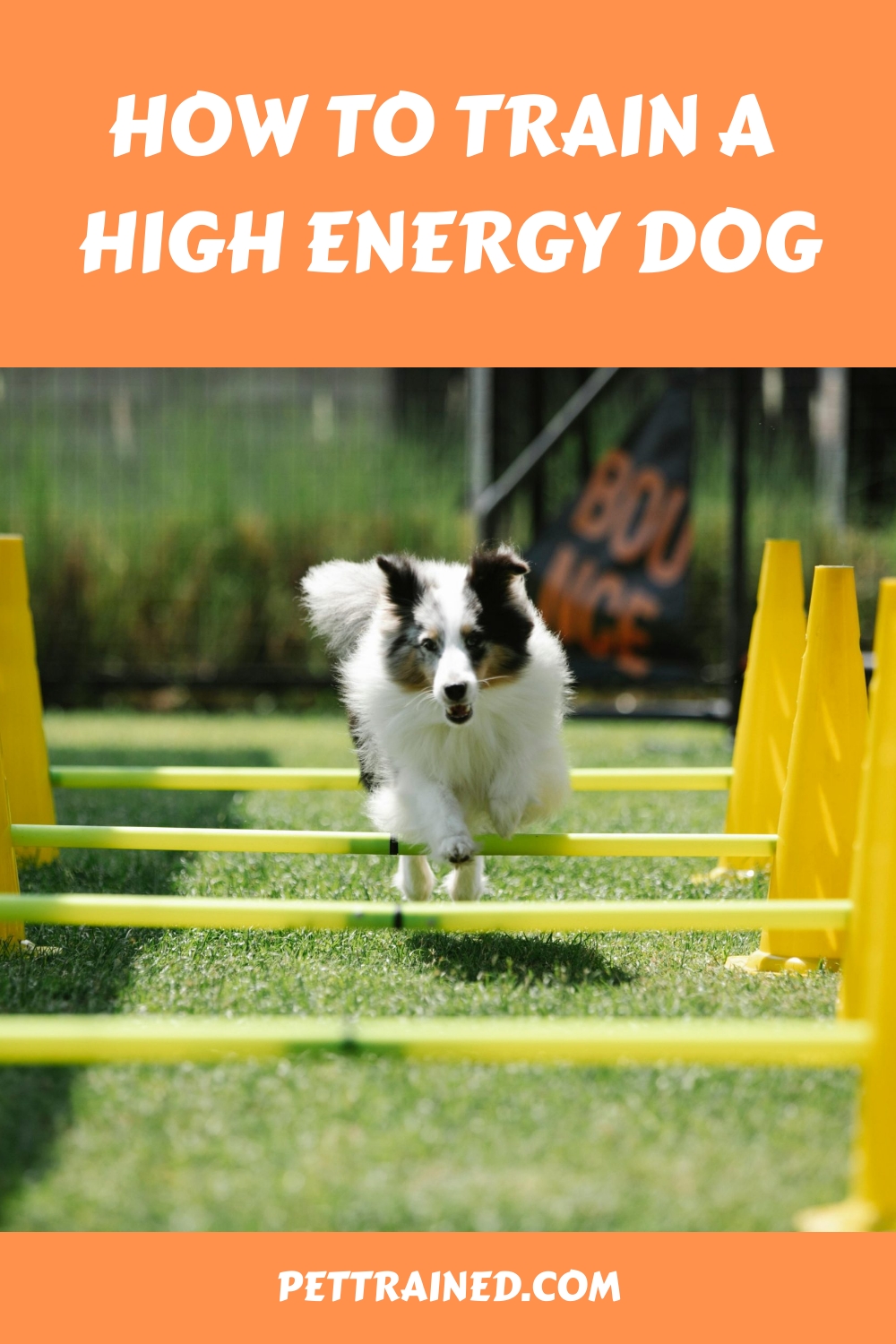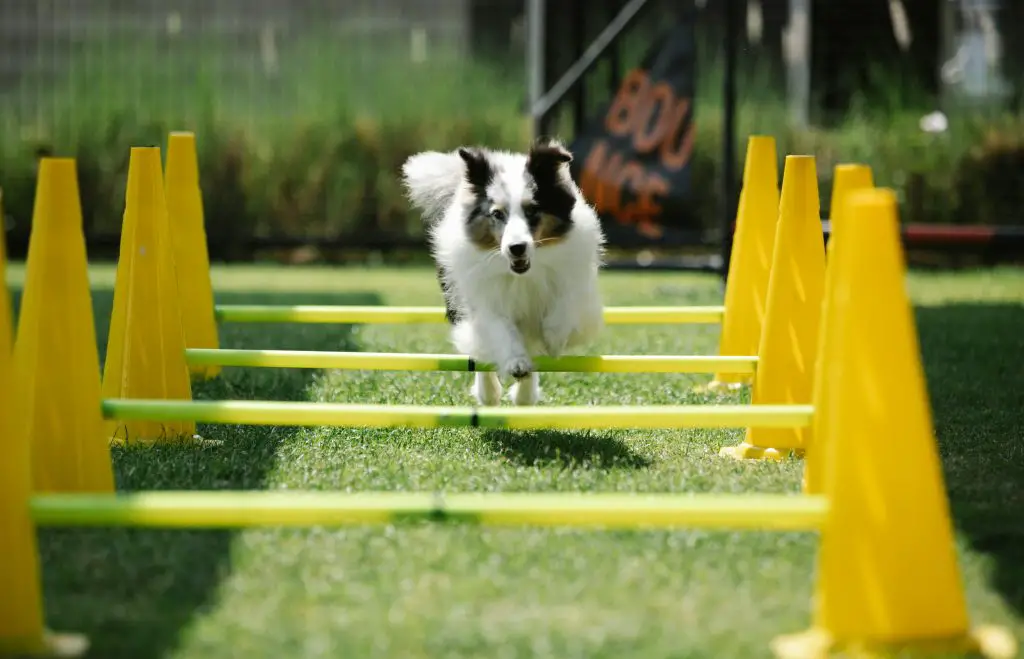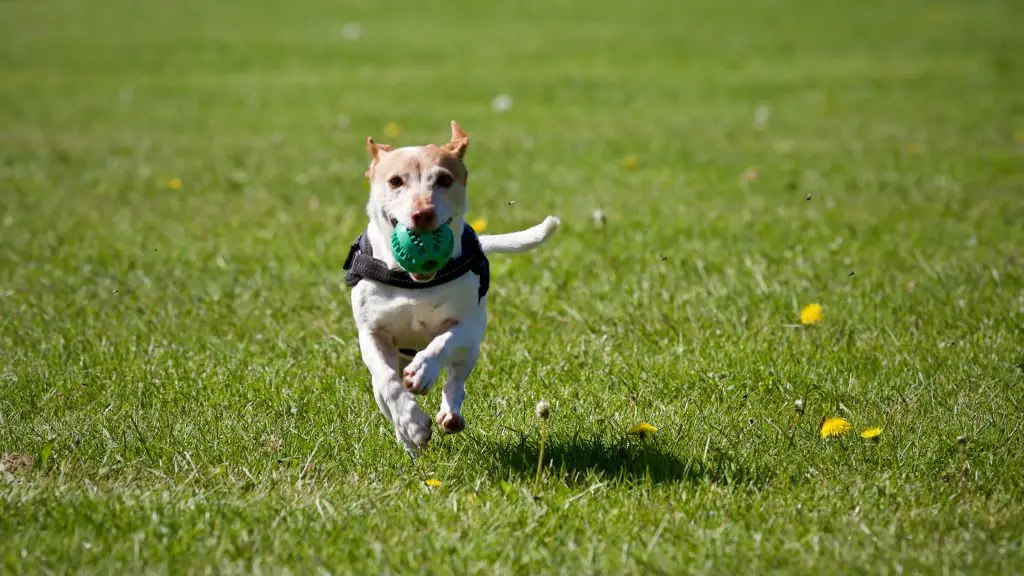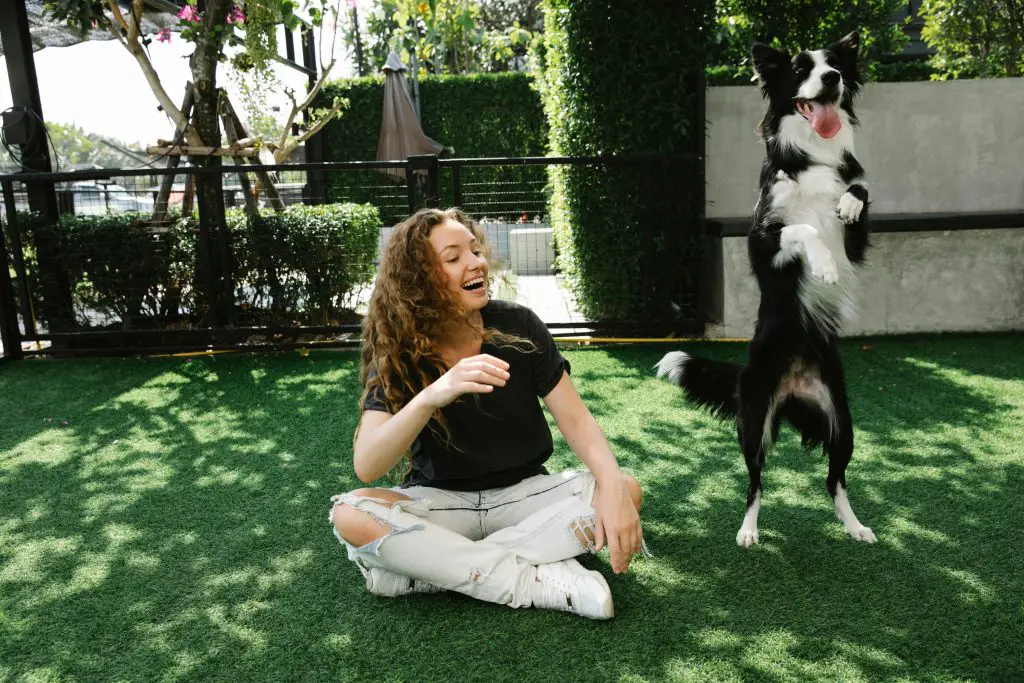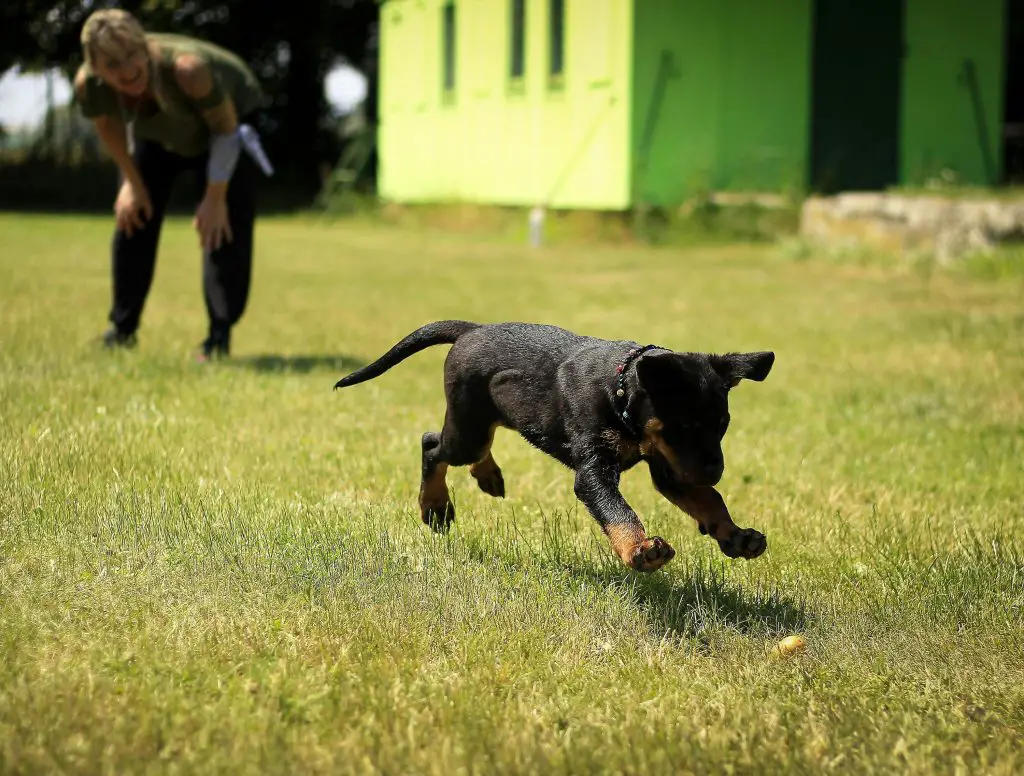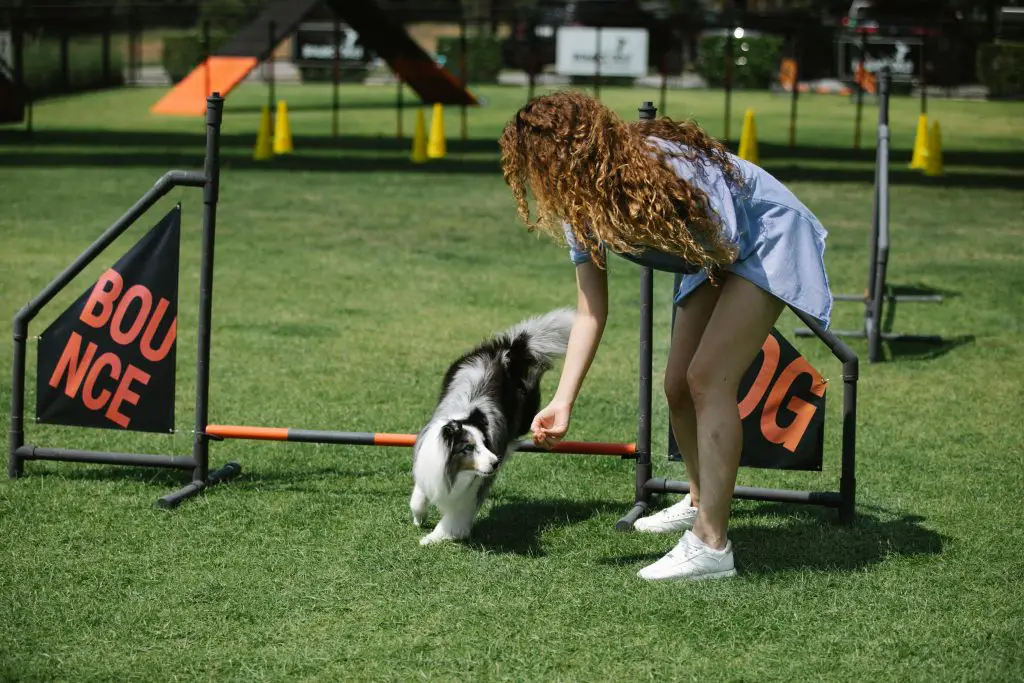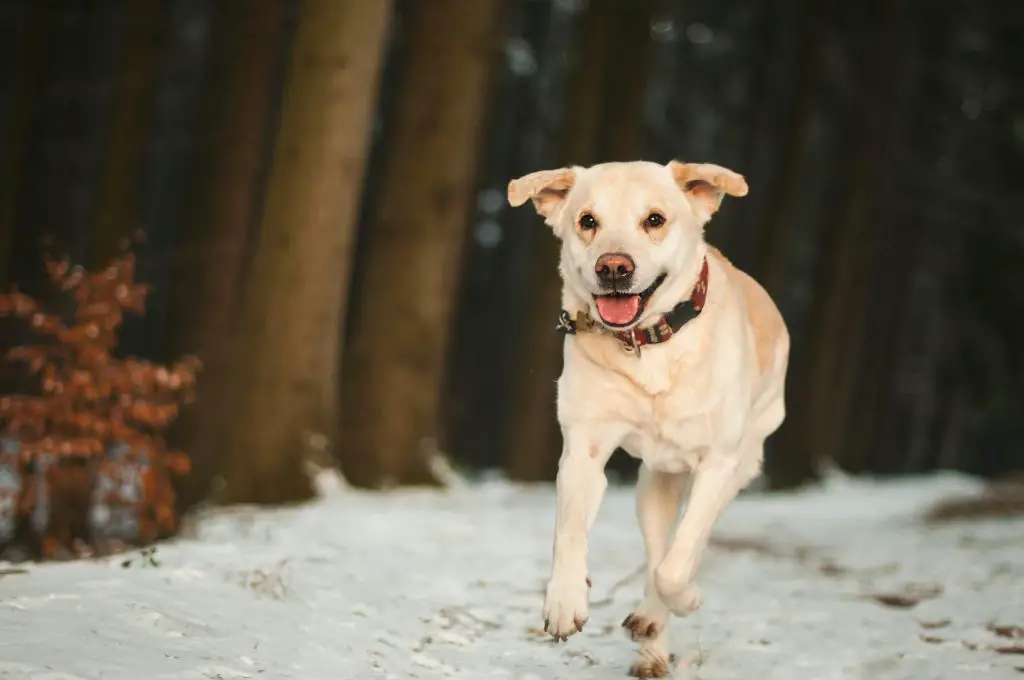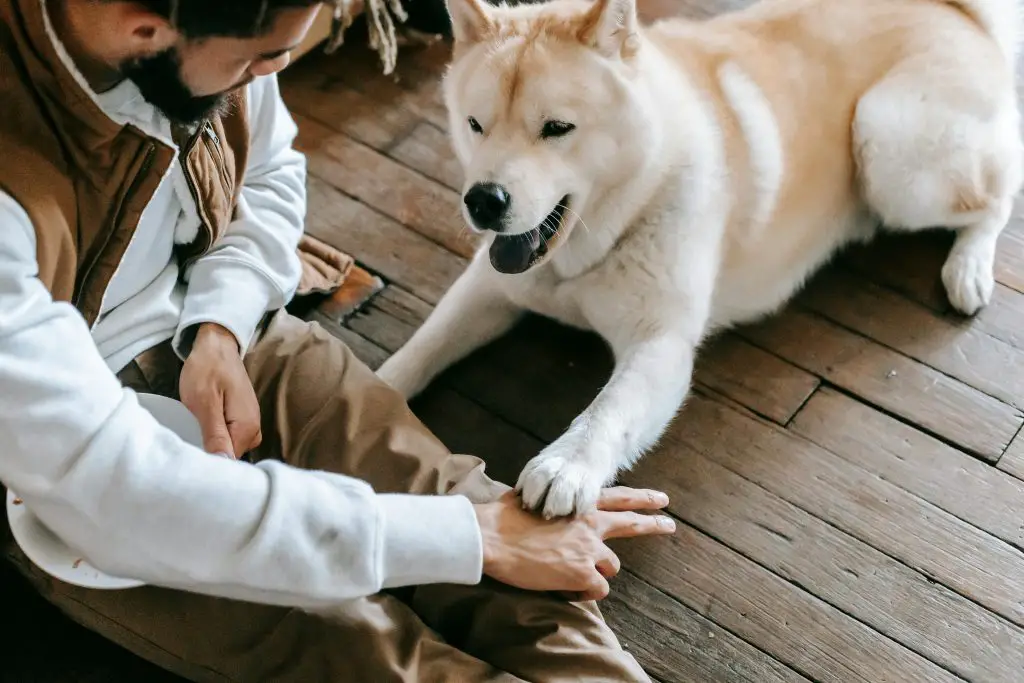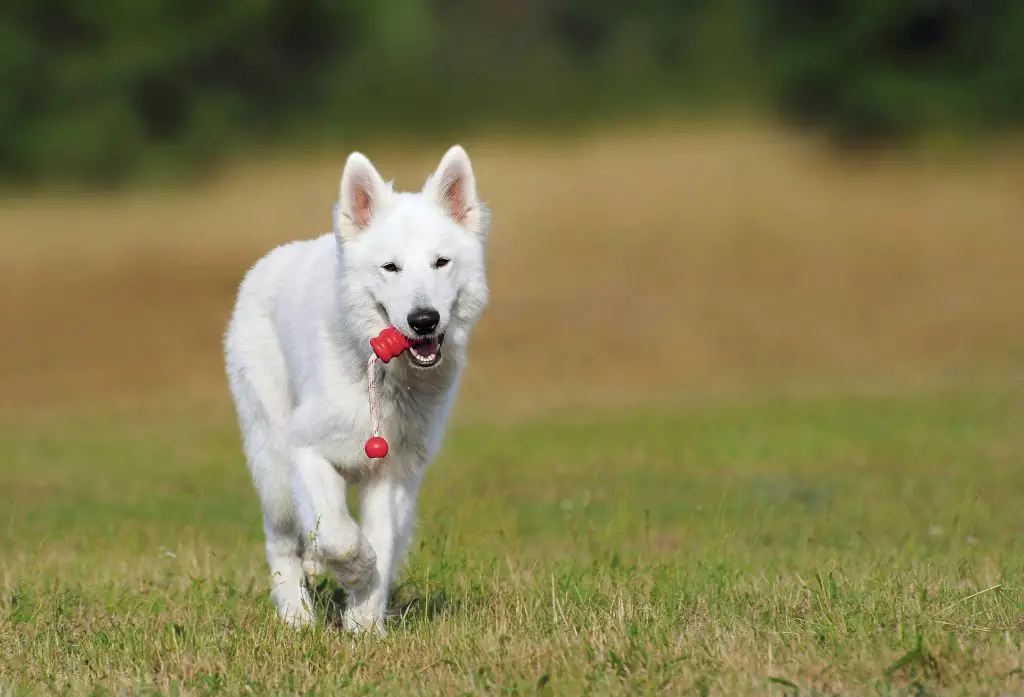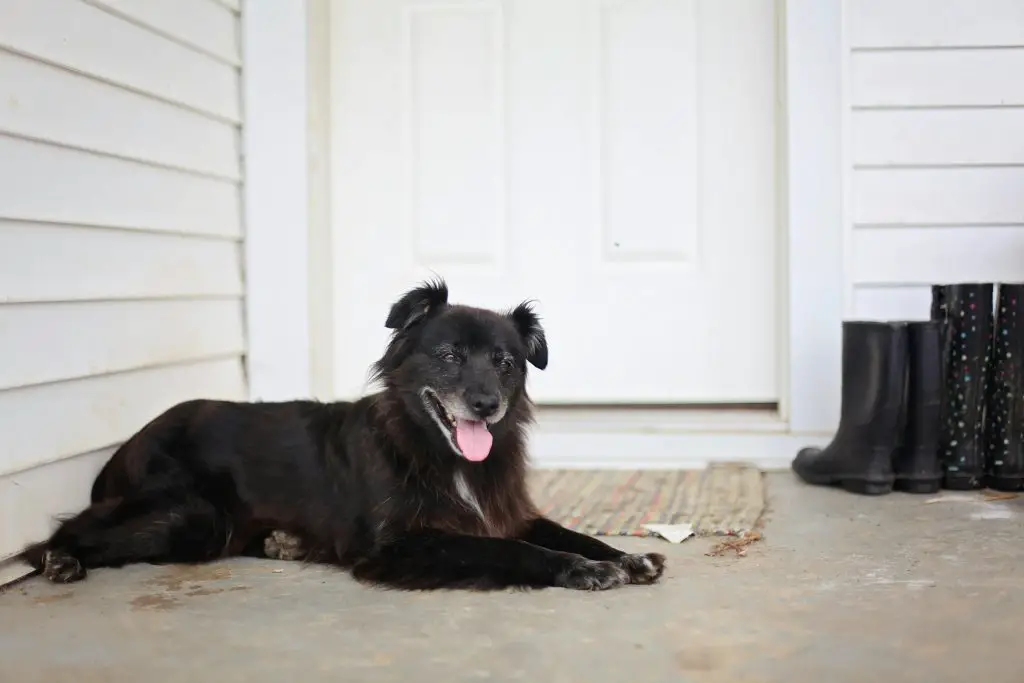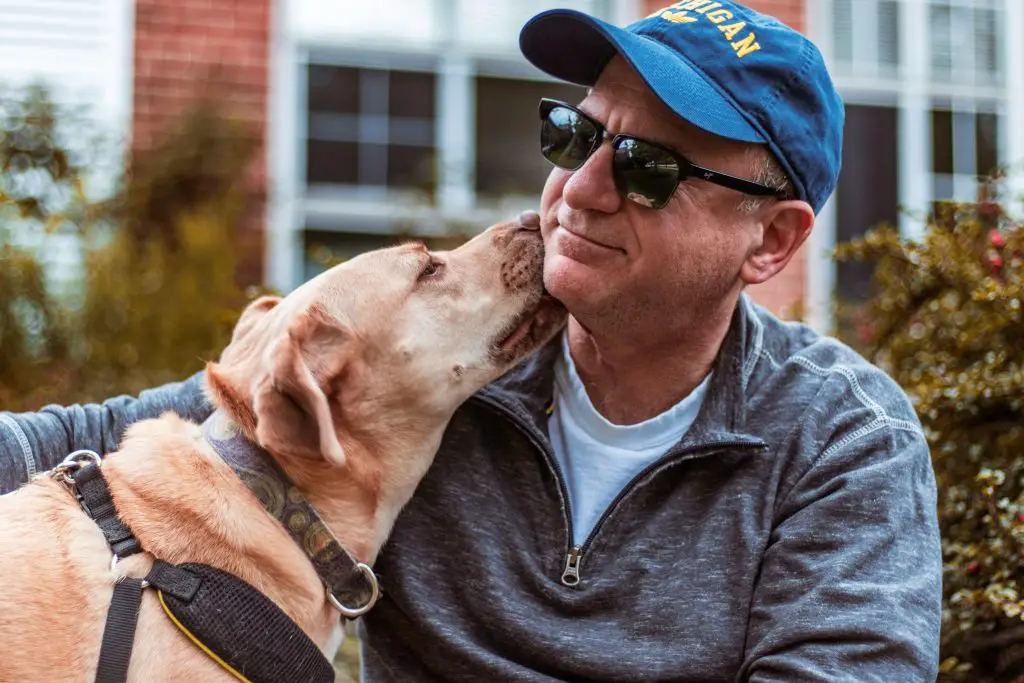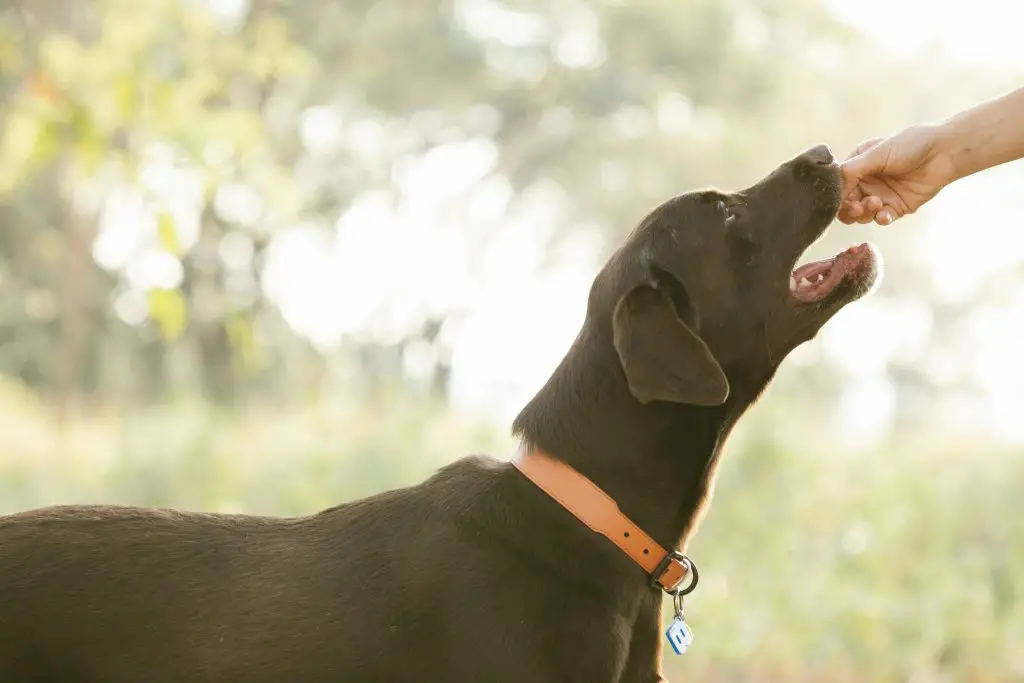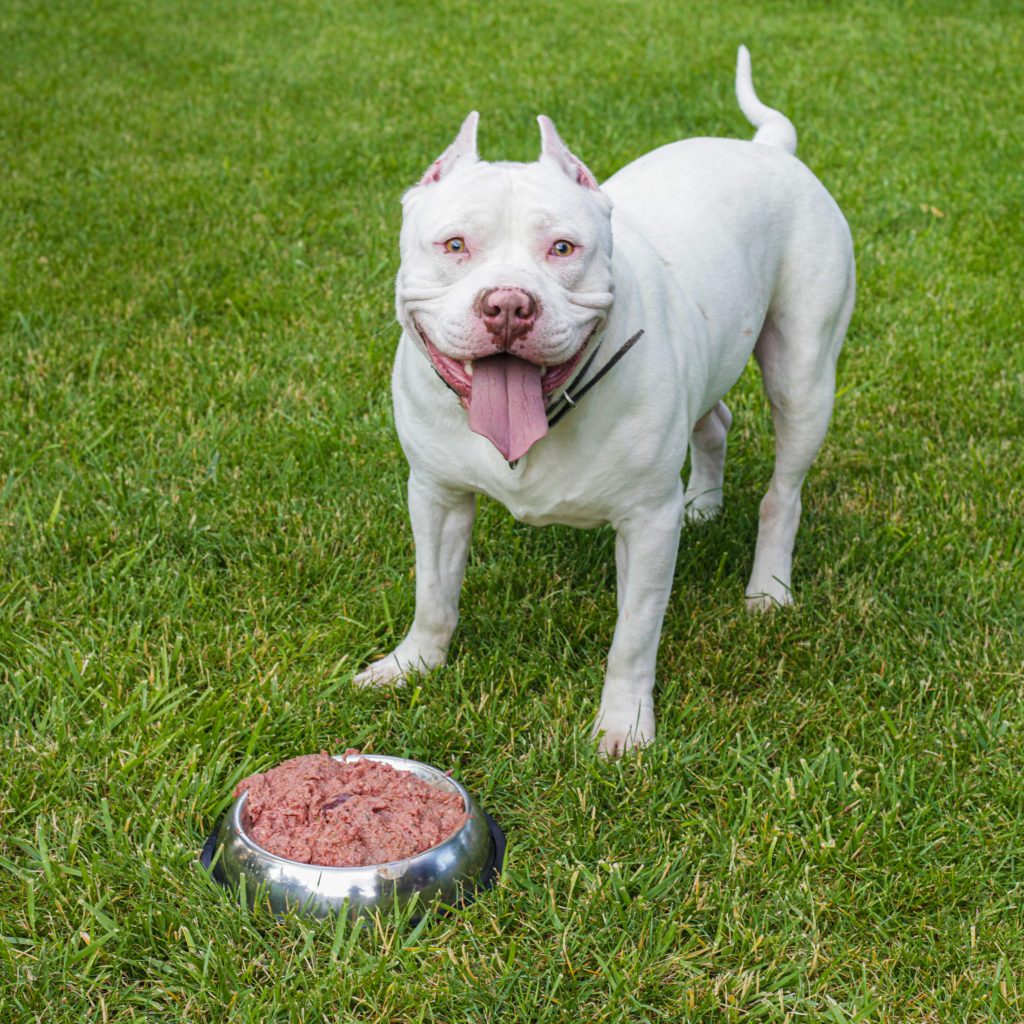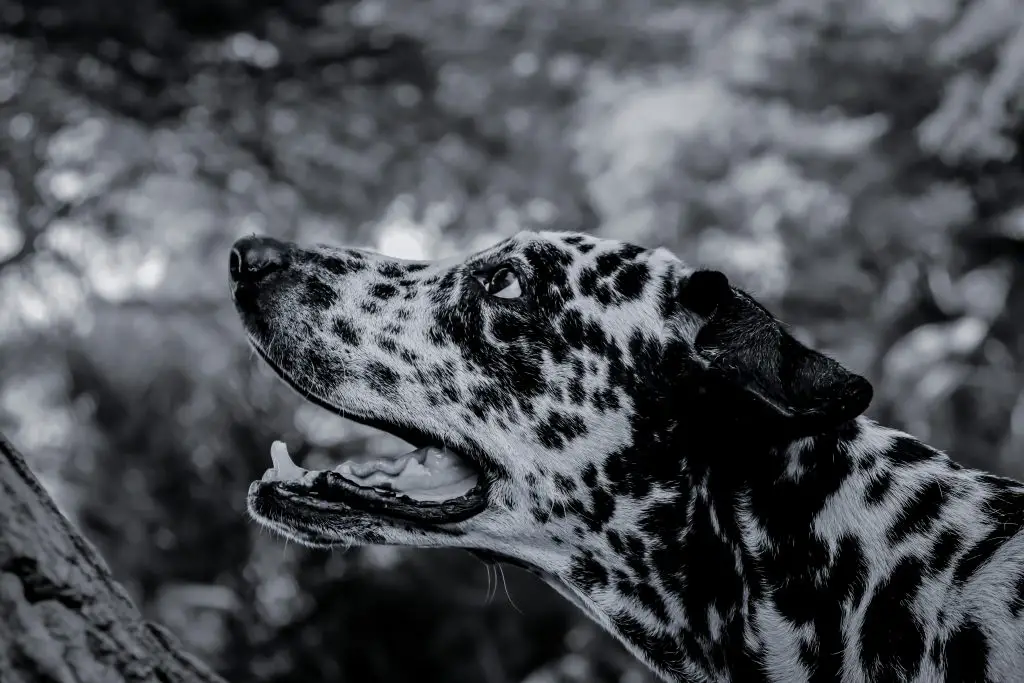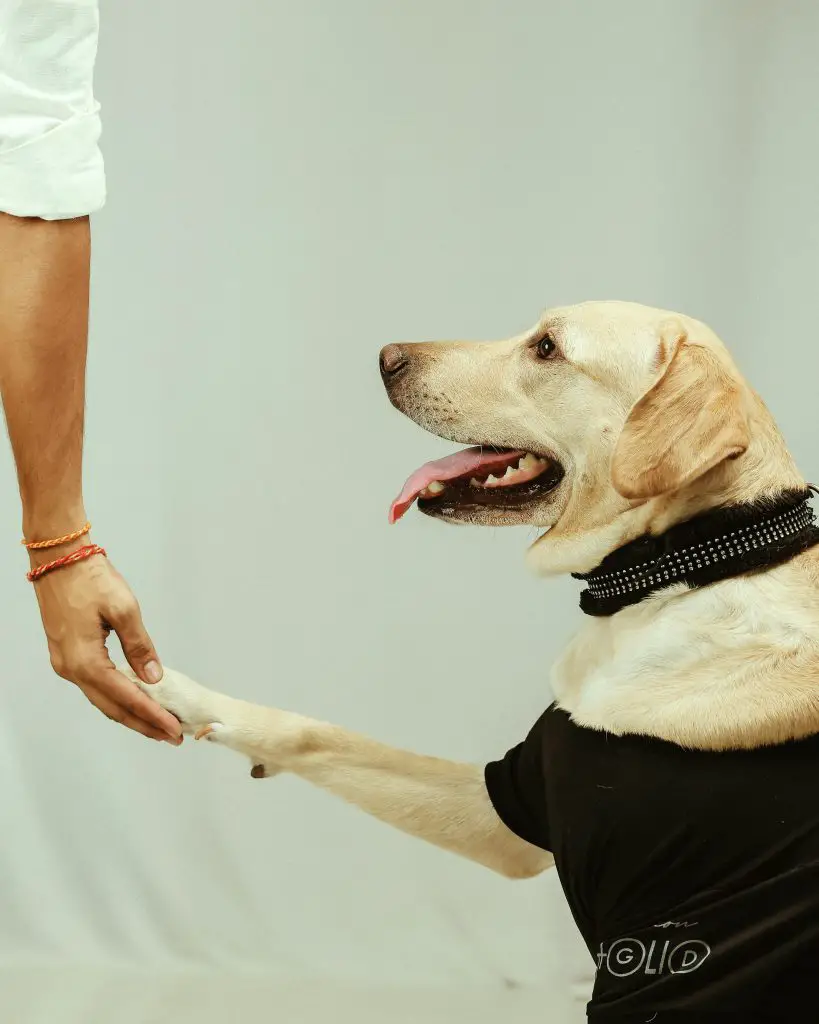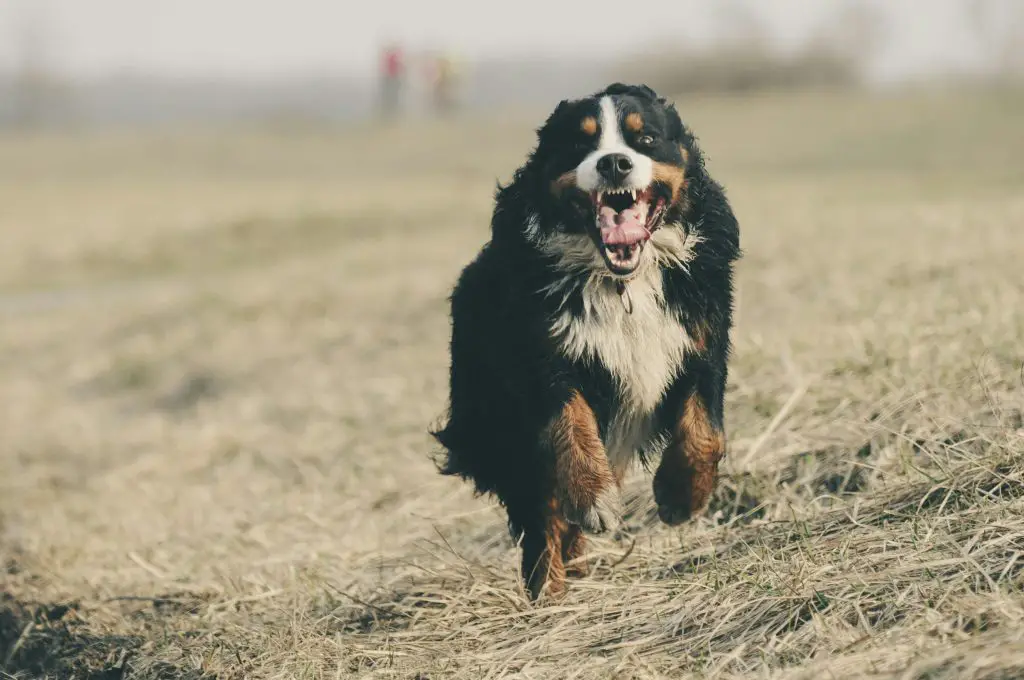You’ve brought home a high-energy dog, and now you’re wondering how to channel that boundless enthusiasm into good behavior. You’re on the right track by recognizing that these dogs require a specialized approach.
As you establish a routine, you’ll need to take into account your dog’s unique energy levels and create a plan that includes high-intensity activities, consistent training, and positive reinforcement.
But before you start, it’s vital to understand what drives your dog’s high energy and how to tailor your approach to meet their specific needs – a significant step that will make all the difference.
Table of Contents
Key Takeaways
- Assess your dog’s energy levels by monitoring their behavior and tailoring a training regimen based on breed characteristics and energy assessment.
- Establish a consistent daily schedule for training, exercise, and relaxation to manage energy levels and maximize training results.
- Utilize high-intensity exercises and activities, such as agility training and running routines, to maintain physical and mental health.
- Implement positive reinforcement techniques, including reward timing and consistency, to encourage desired behaviors and build trust.
- Set clear boundaries and rules, and consistently enforce them, to manage high-energy behavior and promote a sense of security for the dog.
Understand Your Dog’s Energy Levels
Before training your high-energy dog, you need to understand where all that energy is coming from. Dog breed characteristics play a significant role in determining your dog’s energy levels. If you have a breed like a Border Collie, Australian Shepherd, or Labradoodle, you can expect high energy levels.
These breeds were originally bred to work long hours and have the stamina to do so. Establishing a consistent daily schedule for training, exercise, and relaxation can help manage your dog’s high energy levels effectively. This routine consistency is essential for building trust and security in your high-energy dog.
This post contains affiliate links. However all the information provided on this site are my own honest opinions. See more in Disclaimer.
However, not all high-energy dogs fit neatly into breed-specific energy profiles. That’s where energy assessment comes in. Assess your dog’s energy by monitoring their behavior. Are they always on the move? Do they require prolonged exercise sessions to become slightly calm? If so, your dog likely has an extremely high energy level.
Alternatively, if they exert high energy bursts, then recover quickly, they probably have a more manageable, yet still high, energy level. Knowing your dog’s energy level is the foundation for creating an effective training plan.
With an understanding of their energy assessment and breed-specific characteristics, you can tailor a regimen to suit their unique requirements and maximize training results.
Choose the Right Training Environment
Now that you have a solid understanding of your high-energy dog’s energy levels, it’s time to think about the setting in which you’ll be training. Choosing the right environment can make all the difference in your dog’s ability to focus and learn.
Look for distraction-free zones or areas with minimal distractions, such as outdoor spaces or quiet rooms. Incorporating interactive toys during training sessions can help keep your high-energy dog engaged and mentally stimulated. These toys can also serve as rewards for good behavior, enhancing the overall training experience.
To create an effective training space, consider the following key elements:
- Control over noise levels: you want to be able to minimize outside noise that can be a distraction
- Safe boundaries: fences, baby gates, or other barriers to keep your dog from escaping or getting into trouble
- Comfortable settings: shady areas, ventilation, and comfortable flooring can all impact your dog’s comfort and engagement
- Access to training tools and socialization opportunities: proximity to tools, treats, and playmates can facilitate training and socialization
Focus on High-Intensity Exercise
To effectively train your high-energy dog, you’ll want to focus on high-intensity exercises that push them physically and mentally.
You can achieve this through a variety of activities, including running and playtime sessions, agility training exercises, and hiking and fetch sessions.
Agility training provides both physical fitness and mental stimulation, involving obstacles like tunnels, jumps, and poles. This type of exercise not only tires out your dog but also builds their confidence through accomplishment.
Running and Playtime Activities
High-energy dogs require regular, intense physical activity to maintain their physical and mental health. Running and playtime activities are essential components of their exercise routine. You can engage your dog in a variety of high-intensity exercises, such as running routines, fetch games, and obstacle courses.
Interactive ball launchers can provide consistent and exciting fetch games, promoting both physical exercise and mental stimulation for your high-energy dog. These devices are especially useful for indoor play or during inclement weather.
Some activities you can incorporate into your dog’s exercise routine include:
- Engage your dog in Fetch Games with a flying disc or tennis ball.
- Create Obstacle Courses with jumps and tunnels to test your dog’s agility and speed.
- Plan Outdoor Adventures such as hiking, trail running, or camping.
- Organize regular Play Dates with other dogs to enhance their socialization skills.
You can also engage your dog in endurance training exercises with the help of interactive toys, such as agility drills or hide-and-seek games.
Always monitor your dog’s activity levels, hydration, and health signs during exercise, especially on hot days. High-energy dogs need variety in their exercise routine, so remember to mix it up.
Providing regular and consistent running and playtime activities helps your dog release excess energy and maintain good mental health.
Agility Training Exercises
While keeping your dog’s high-intensity exercise needs in mind, incorporating agility training exercises can provide a physically demanding yet mentally stimulating activity.
You’ll challenge your dog to navigate through obstacle courses, participate in agility games, and perform physically demanding tasks like weave poles, tunnel runs, and jump hurdles. These exercises don’t just exhaust their energy reserves but also improve their coordination, balance, and agility.
Essential commands like “come,” “sit,” and “stay” are vital for safety during agility training and should be reinforced consistently.
To execute agility training exercises effectively, you’ll need to incorporate speed drills, utilize handler cues, and engage in teamwork exercises that reinforce communication and trust.
Set up a mini obstacle course in your backyard or sign up for agility classes. Guide your dog through balance beams, and gradually increase the difficulty level as they progress.
Focus training is also essential in agility training, as it helps your dog stay concentrated on the task at hand.
Hiking and Fetch Sessions
Building on the physically demanding yet mentally stimulating aspects of agility training, hiking and fetch sessions offer another effective way to exhaust your dog’s energy reserves.
You’ll want to find dog-friendly parks with hiking trails that cater to your dog’s fitness level. Don’t forget to bring essential hiking gear, such as water, snacks, and a first-aid kit.
Consistent leash training is vital for a safe and enjoyable hiking experience, preventing pulling and distractions during outdoor activities.
To make the most of your outdoor adventures, incorporate fetch variations into your routine. This can include endurance games like hide-and-seek, agility fetch, and retrieve games. These activities not only build your dog’s stamina but also challenge their problem-solving skills.
Before hitting the trails, confirm your dog has basic leash training to avoid any mishaps. As you explore nature together, you’ll strengthen your bond and create lasting memories.
Some key aspects to ponder when planning hiking and fetch sessions:
- Choose trails with varied terrain to keep your dog engaged and challenged.
- Incorporate fetch techniques that promote obedience and focus.
- Gradually increase the duration and intensity of your sessions to avoid burnout.
- Mix up your routine with new locations and activities to keep your dog excited and motivated.
Set Clear Boundaries and Rules
Establishing a well-structured environment is essential when training a dog that’s bursting with energy. You need to set clear boundaries and rules to help your dog understand what’s expected of them. Boundary setting is critical in managing your dog’s behavior, and it starts with establishing a routine.
Create a schedule for feeding, exercise, and playtime, and stick to it. This structure will help your dog feel secure and develop a sense of responsibility. Basic obedience training is a fundamental step in setting boundaries and rules, as it teaches your dog important commands like sit, stay, and leave it.
Trending in Dogs:
These commands provide a foundation for more advanced training and help establish control in various situations.
Rule reinforcement is also essential in maintaining a well-behaved high-energy dog. Set clear rules for your dog’s behavior, such as not jumping on furniture or not pulling on the leash. When your dog breaks a rule, calmly and consistently enforce the consequence.
Positive reinforcement of good behavior will come later, but for now, focus on establishing the rules and boundaries. Consistency is key in boundary setting and rule reinforcement. Make sure everyone in the household is on the same page and enforces the rules equally.
With a well-structured environment and clear rules, you’ll be well on your way to training your high-energy dog.
Use Positive Reinforcement Techniques
You’ll get the best results from your high energy dog when you use positive reinforcement techniques that reward desired behavior.
By choosing effective treats and rewards, you can motivate your dog to learn and respond to commands quickly.
Clicker training can be especially effective for marking specific behaviors and creating clear associations with rewards.
Consistency is key, so be sure to establish a routine and stick to it, rewarding good behavior every time.
Reward Desired Behavior
When training a high-energy dog, rewarding desired behavior is essential for encouraging good habits and discouraging bad ones. You’ll want to focus on positive reinforcement techniques that recognize and reward desired behaviors, rather than punishing undesired ones.
Clicker training is a great method for this, as it allows you to mark the exact moment your dog exhibits the desired behavior, making it easier for them to associate the action with the reward. Consistency is key when using positive reinforcement techniques to train your high-energy dog, as it helps reinforce learning and promotes command mastery.
By rewarding desired behavior, you’ll be using behavior shaping to mold your dog’s actions into what you want to see. This approach not only encourages good behavior but also builds trust and strengthens your bond with your dog.
Some key points to keep in mind when rewarding desired behavior include:
- Use rewards immediately after the desired behavior occurs
- Use high-value rewards for high-priority behaviors
- Vary rewards to keep things interesting and prevent boredom
- Phase out rewards as behaviors become consistent to avoid over-reliance on treats
Choose Effective Treats
Choosing the right treats is a key component of rewarding desired behavior in high-energy dogs. You need to select treats that are not only tasty but also healthy and motivating for your dog. When choosing treat types, consider your dog’s dietary restrictions, preferences, and allergies. For example, if your dog is gluten-intolerant, opt for gluten-free treats.
| Treat Type | Pros | Cons |
|---|---|---|
| Jerky Strips | High-protein, easy to digest | Can be expensive |
| Sweet Potato Chews | Nutritious, low-calorie | May not be as tasty for some dogs |
| Training Kibbles | Convenient, inexpensive | May not be as motivating for some dogs |
When it comes to treat timing, use them immediately after desired behavior to reinforce what you want your dog to learn. Consistency is key, so use treats at the same time every time. You can also phase out treats as your dog becomes more reliable in performing the desired behavior. Remember, treats are a tool, not a bribe. By choosing the right treats and using them effectively, you can motivate your high-energy dog to learn and perform desired behaviors.
Be Consistent Always
Consistency is essential when training a high-energy dog, as it helps to establish clear expectations and reinforces desired behavior. You must stick to your training routines and schedules to avoid confusing your dog.
Consistency importance can’t be overstated, as it helps to build trust and strengthens the bond between you and your dog. Positive reinforcement techniques are particularly effective for high-energy dogs, as they make training enjoyable and encourage active participation. Typical training duration can range from 2-4 weeks, depending on your dog’s learning speed.
To achieve consistency, focus on the following key aspects:
- Set clear behavior expectations and communicate them effectively through command clarity.
- Establish a regular training schedule and stick to it.
- Use positive reinforcement techniques, such as treats and praise, to encourage desired behavior.
- Guarantee precise reward timing to associate the reward with the correct behavior.
Manage Destructive Behavior Patterns
Managing destructive behavior patterns is essential for high-energy dogs, as their excess energy often manifests in unwanted actions like chewing, digging, or barking.
You’ll need to identify the underlying causes of these behaviors, such as separation anxiety, boredom relief, attention seeking, or improper socialization. Destructive chewing, for instance, can be a sign of anxiety or boredom, while excessive barking may indicate attention seeking.
Positive reinforcement through treats and praise can be an effective way to encourage desired behaviors and discourage destructive ones. This approach aligns with the reward-based training methods used for teaching dogs to greet visitors properly.
To address these issues, you’ll need to establish clear boundary setting and provide adequate exercise and mental stimulation. Crate training can help with separation anxiety and prevent destructive behavior when you’re not home.
Indoor activities, such as obedience training or puzzle toys, can provide boredom relief and redirect excess energy. For digging behavior, consider providing a designated digging area or engaging your dog in alternative activities.
By understanding the root causes of these behaviors and implementing effective strategies, you can manage destructive behavior patterns and help your high-energy dog become a well-behaved companion.
Consistency and patience are key to achieving this goal.
Provide Mental Stimulation Activities
One way to keep your high-energy dog engaged and focused is to provide mental stimulation activities that challenge their minds and redirect their excess energy. By doing so, you’ll not only calm their destructive tendencies but also strengthen your bond and boost their confidence.
To keep your dog mentally stimulated, incorporate activities that cater to their natural behaviors and problem-solving skills. Try the following:
- Puzzle toys filled with treats or kibble, which require problem-solving to dispense the rewards
- Scent games and hide-and-seek activities that challenge your dog’s sense of smell and encourage active search
- Interactive feeders and brain games that require critical thinking to access food or toys
- Trick training and obedience challenges that engage your dog’s cognitive abilities and provide a sense of accomplishment
In addition to these activities, consider enrolling your dog in dog sports or engaging them in social play.
You can also create DIY enrichment activities, such as cardboard box puzzles or sensory experiences, to keep your dog’s mind active.
Frequent Questions and Answers
You’ll need to adjust your high-energy dog’s exercise routine in extreme weather conditions. Consider exercise alternatives like indoor activities such as hide-and-seek, scent work, and obedience training to keep them mentally and physically stimulated.
Think of your high-energy dog as a revved-up sports car – it needs to burn off fuel to avoid overheating. You can train them without a backyard by engaging them in indoor activities and providing mental stimulation.
You can consider apartment-friendly breeds like Australian Cattle Dogs, Border Collies, or Shiba Inus. Since they require regular exercise, you’ll need to find exercise alternatives like indoor agility training, jogging, or playtime in nearby parks.
You’ll start seeing results from high-energy dog training within 2-6 weeks, depending on training consistency and your dog’s individual needs. Stick to a regular routine, and with time, patience, and persistence, you’ll notice significant improvements in behavior.
You’ll be thrilled to know that puppy training can start as early as 8 weeks old! With a gazillion bursts of energy, puppies under 6 months old can benefit from energy management techniques to set them up for success.
